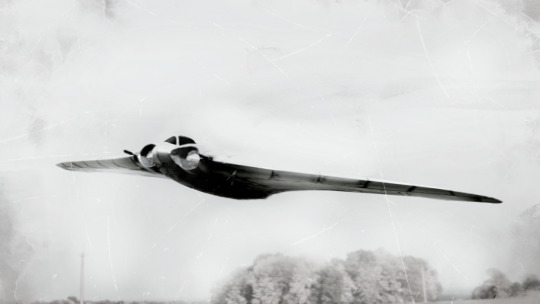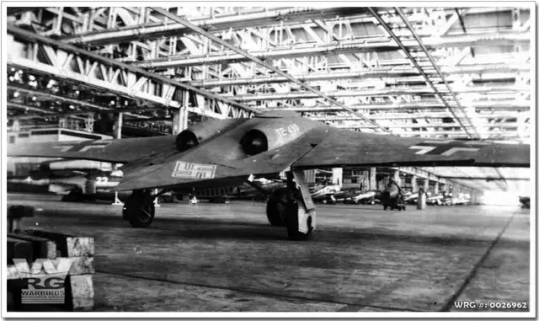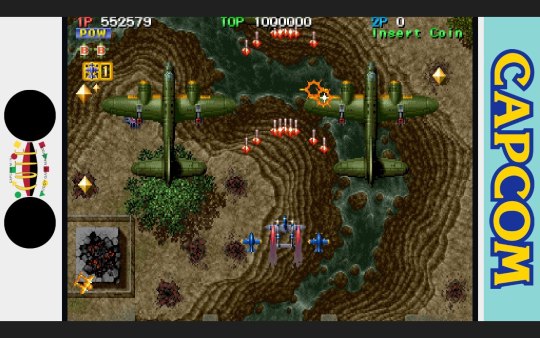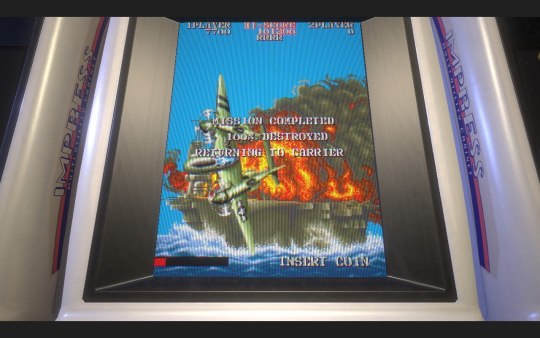#ho-229
Explore tagged Tumblr posts
Text



Ho-229 Commission for Sovietrainbow! Learned a lot and got to experiment with different ways of approaching a workflow to producing a model! Also a bit of post processing lol
#art#my art#3d modeling#3d art#3d model#3d#3d render#blender#airplane#aircraft#horton#ho-229#fighter jet#second world war#world war 2#wwii
66 notes
·
View notes
Text


At the end of the Second World War, a Horten Ho-229 fighter, an advanced German aircraft with a flying wing design, was captured.
This innovative aircraft, developed by the Horten brothers, was notable for its ability to reduce radar detection, a very advanced technology for its time.
The Ho-229 represented a major leap in aeronautical engineering and is considered a precursor to modern stealth aircraft. Following its capture, Allies studied this aircraft intensively to understand and possibly integrate its technologies into future aeronautical developments.
@VoicesofWW2 via X
186 notes
·
View notes
Text

Horton Ho 229 V3, captured and shipped back to the States. This is the one and only time it was assembled. When captured in Germany it was incomplete, the fuselage/centre section was many miles away from the outer wing panels when discovered by US troops. The Ho 229 was the only jet powered flying wing that actually flew during the war.
The second prototype, V2, was destroyed and the pilot killed on its second powered flight. This is the third prototype and was taken to America under Operation Paperclip. It was the world's first stealth aircraft, although its stealth capabilities were only discovered after computer modelling in the 21st century. For more, see my Facebook group - Eagles Of The Reich
#germany#ww2#luftwaffe#ww2 aircraft#horton#horton ho 229#ho 229#german jet fighters#stealth aircraft#operation paperclip
219 notes
·
View notes
Text

Artists concept of the German HO 229 V2 Bomber in flight
Only three of these aircraft were manufactured. Two gliders and one jet powered model. The glider version was the first to fly on March 1st 1944. The Horten HO 229 V2 made it's first powered maiden flight in December of 1944 and was destroyed in a crash after an engine failure on February 2, 1945.
61 notes
·
View notes
Note
Might I request a top 10 for cards drawn by Akira Egawa? Her art is so distinct and beautiful. I especially love the way she draws tera pokemon
held onto this one for a bit because she's so active in the TCG rn and i wanted to let her cook a little more, but screw it, her artwork is too incredible not to share. legitimately might be my favourite artist working in the TCG right now.
FULL TCG RANKINGS MASTERPOST
10. Enamorus V (Sword & Shield - Lost Origin TG18/TG30)

9. Espathra (Scarlet & Violet - Paradox Rift 197/182)

8. Ho-Oh V (Sword & Shield - Silver Tempest 140/195)

7. Tulip (Scarlet & Violet - Paradox Rift 259/182)

6. Duraludon VMAX (Sword & Shield - Silver Tempest TG21/TG30)

5. Charizard EX (Scarlet & Violet - Paldean Fates 234/091)

4. Gardevoir (Sword & Shield - Silver Tempest TG05/TG30)

3. Chi-Yu EX (Scarlet & Violet - Paldea Evolved 259/193)

2. Zekrom (Sword & Shield - Brilliant Stars TG05/TG30)

1 (TIE). Arceus VSTAR/ Origin Forme Dialga VSTAR/Origin Forme Palkia VSTAR/Giratina VSTAR (Crown Zenith 227, 228, 229, & 230/230)




#akira egawa#enamorus#cogita#espathra#tulip pokemon#dendra#ho-oh#duraludon#raihan#charizard#gardevoir#diantha#chi-yu#zekrom#natural harmonia gropius#arceus#dialga#palkia#giratina#tcg rankings#pokemon tcg
691 notes
·
View notes
Text

Incomplete Horten Ho-229 V3 captured by Allied forces in Gotha, Thuringia, Germany 1945.
67 notes
·
View notes
Text

Daily Wunderwaffe NO.7: The Focke-Wulf P.031 0239/10 (AKA The 3X1000 Bomber Project B) Is an aircraft designed to fit a very strict criteria of carrying 1000 KG of bombs over a distance of 1000 KM, at a speed of 1000 KM/H. Focke-Wulf designed 2 other planes to fit this criteria, but the Horten Ho-229 would end up beating all 3 of them in handling, speed and capability.
13 notes
·
View notes
Text
Top-down Planes Galore

Over the last few years, thanks to my wife's English side of the family, I've visited a fair share of interesting British museums. One of these is the Shuttleworth Collection, a neat place that features an array of planes from the early half of the 20th century. If you're ever in Bedfordshire and have a hankering to see biplanes from the 1920s, I really can't recommend a visit enough. I wouldn't call myself an aviation geek, but there's something about seeing a World War II aircraft in person that stirred my imagination, and one of the souvenirs I bought from my visit was a cool pair of socks that had pixelated biplanes on them.
I specifically bought the socks because they reminded me of Capcom's 1942, the first entry in the 19XX series of shoot 'em ups, AKA shmups. Honestly, I hadn't played much of 1942 at the time, but I've always known enough about shmups to think of the game when I see pixelated biplanes. It probably stands out in my head as an interesting example of a Japanese company making a product where the whole goal is to blow up the Japanese. Yep, 1942 puts the player in the role of a Lockheed P-38 Lightning pilot maneuvering his aircraft through the skies of the Pacific Theater, on a mission to reach Tokyo and blast the heck out of everything. Apparently the game was made with Western audiences in mind, so I suppose we have capitalism to thank for a game that is both historically accurate and not historically accurate at all. (Yes, Japan lost the war, but I don't think any of the Lockheeds in the Battle of Midway had spray guns capable of shooting a billion bullets at once.)

I recently dove into 1942 and almost all of the other games in the 19XX series, mostly because I was inspired by my British nephew, who's recently been going on about planes for hours on end. You can play almost all of them via the Capcom Arcade Stadium compilations on Steam, which repackage classic arcade games and make them easily playable without the hassle of needing to fiddle with MAME emulation. (The decision to make each game DLC that you have to buy is probably questionable, but putting that aside, these packages are pretty okay.)
Anyway, I soon discovered that the original 1942 is the epitome of a 1980s arcade quarter gobbler, with a staggering 32 levels of monotony and some of the most annoyingly tinny background music known to man. It's fun to do loops around Japanese bombers for the first ten minutes, and I've always loved the power-up that gives you two flanking planes that help soak up extra damage, which would go on to be a series staple. Beyond that, 1942 grates at the soul and has not aged well.


1943: The Battle of Midway, and its slightly remixed semi-sequel 1943 Kai, are much better. Here, we bear witness to screen-filling tsunami attacks that can instantly wreck all enemies, a more forgiving difficulty level, and varied stages that don't consist of simply flying over the ocean and rice paddies. Everything's faster and a good deal more fun, and instead of solely taking down planes, now you've got boss battles against Imperial Japanese naval fleets, ending in a fight against the battleship Yamato. And thankfully, the tinny music is gone and replaced by battle-ready tracks that are nicely catchy.
This formula is refined even further in the later games, all of which loosen up on the feeling of "one American plane versus Japan" for a progressively zanier feel. 1941: Counter Attack ditches the Pacific Theater for firefights over European skies, and despite taking place in the earlier years of WWII, your pilot goes up against enemy crafts that are so extreme in size and flavor that they border on science fiction. You'll fire away at German rockets that look like they're designed to fly to the moon and tanks that take up a quarter of the screen. The end boss is a Horten Ho 229, the German prototype bomber that never went into mass production, yet is a formidable foe in this game that is sleek and almost alien-like in its movements.

19XX: The War Against Destiny takes that science fiction appeal to the maximum and says, "To hell with a historical shmup, let's go to the future with two X's, baby!" In an amusing move that would later be replicated by the Call of Duty series two decades later (when they jumped from WWII to the arena of Modern Warfare - and later Advanced Warfare), 19XX sees you taking on the Outer Limits, a terrorist organization that somehow has a futuristic army with hundreds of expendable fighter pilots. For the first time, you can choose between three different planes: the old school Lockheed P-38 Lightning (the well-balanced one), the de Havilland DH.98 Mosquito (the heavy firepower one), and the Kyushu J7W Shinden (the speedy one). All of these planes are worthy options against enemies that scale in a ludicrous fashion, and one of the bosses in the later levels is basically a mech. It's great. And because the game runs on Capcom's CPS-2 arcade board, which also powered the Street Fighter Alpha/Zero series, the action is fast and clean to a degree that's very reminiscent of the company's fighting game output.


1944: The Loop Master is the last 19XX game I played, because it's the last one available in the Capcom Arcade Stadium. It takes the action back to WWII, but the gusto and fury of all the futuristic stuff exhibited in 19XX: The War Against Destiny is present and accounted for. Hello, my biplane can shoot lasers? Sure, why not! Technically, this one was developed by Eighting and not by Capcom, and all I know about Eighting is that they made the Bloody Roar games and Battle Garegga, another shmup with a cool soundtrack that samples the techno track "Jupiter Jazz," by Underground Resistance. They did a good job, and while 1943 and 19XX: The War Against Destiny stick out in my memory more than The Loop Master, I can safely say that this one features a little dude who parachutes out of your plane when you die. About time I finally saw my pilot!
Honestly, I'm not a great shmup player. I played all of these casually on my Steam Deck, and I never would've made a dent in them in the arcades. But there's something about the 19XX series that's appealing to me, at the very least on an aesthetic level. It's probably the highly detailed 2D pixelated artistry that goes into the top-down depiction of these warplanes, which are given the same slavish fanboyism that you see in Japanese mecha franchises. I think back to the several times I've visited Japan and been to antiwar exhibits like the Hiroshima Peace Memorial. Minus a few groups of nationalist nutjobs, Japan's by far and large a deeply antiwar country - but there do exist otaku who nerd out over WWII-era tech, usually not in a "the Imperial Japanese Army was right" sort of way, but in a way that basically says, "the Yamato was one of the biggest battleships ever constructed at 70,000+ tons, I shall now proceed to write an essay about why that was cool." And you know, I can appreciate that attention to technical detail, just like how I can respect the planes on exhibit in the Shuttleworth Collection. So give the 19XX games a whirl if you like planes or simply dig fine artistry - and go visit the Shuttleworth and buy those socks while you're at it.

#pixel grotto#now playing#1942#1943: the battle of midway#1941: counter attack#19xx: the war against destiny#1944: the loop master
9 notes
·
View notes
Text
Jess Watches // Mon 13 May // Day 229 Synopses & Favourite Scenes & Poll
Dark Matter (with B) 1x02 Trip of a Lifetime
Jason wakes to a life that makes no sense - he doesn't have a family and he's created something extraordinary.
After watching this ep we talked about what our other selves could be up to if we'd made different life choices or if our parents had. It throws up an interesting thought exercise that we got very absorbed in. Also, gutted we didn't get to keep 2 Jennifer Connellys. :(
Hacks 3x03 The Roast Of Deborah Vance
After learning there's a Late Night vacancy, Deborah makes sure everything -- and everyone -- is operating at its finest for her roast.
I hate roasts for being mean-spirited. (What a cunt.) But if it means I get to hear Jean Smart laugh so joyously then it's worth it. And DJ's speech was very quotable (What a cunt.) but the superior and heartwrenching scenes were after the NA meeting, when DJ had that it out with Deborah (What a cunt.) and after the roast with the moment of clarity about Deborah's addiction. (What a cunt.) Also, JPL, please give Kiki a spin off with the other PTA mums.
Extraordinary Attorney Woo Ep 2 The Wedding Dress That Slipped Off
The father of a bride sues a hotel for a wedding that ended in a humiliating disaster. Lee Jun Ho asks Young Woo to share her whale facts over lunch.
YoungWoo: [ I know what you are. ] *Client withdraws from the trial so she can be with the woman she loves.* YoungWoo (and team):

2 notes
·
View notes
Text

The Horten Ho 229, late WW2 German prototype fighter/bomber. First flying wing powered by a jet engine. First to incorporate stealth technology.
@ron_eisele via X
146 notes
·
View notes
Text
just played 10 matches with my kill assist lineup trying to do a battle task. 7.3 germany, primary vehicles are the wiesel and Ho 229, with Ru 251 and kugelblitz for backup.
remember I was aiming for assists, only taking kills if I needed to protect myself. (there were also a few times I killed a tank with the 229 that I really thought I wouldnt be able to kill)
in that time I had:
11 air kills
30 ground kills
27 deaths
20 assists
50% win rate
I had more ground kills than total deaths, not counting the planes I shot down. but only 2 assists per game on average.
tell me more about how germany suffers. (hint: they dont, german mains just suck ass at the game)
in more than half the matches, the enemy was shooting into our spawn during at least part of it
I was top three in 9/10 matches, and top of my team in four of them. remember I was primarily playing the little wiesel with no armor and just a 20 mil autocannon, and the Ho 229 with no bombs using the AP belts. and I was consistently beating out players taking heavy tanks and MBTs, among other things.
#war thunder#yeah this is partially just to brag about the session I had#but also to complain about how ineffective and utterly fucking useless most german players are
2 notes
·
View notes
Text
Books of 2023

Book 30 of 2023
Title: To the Limit: An Air Cav Huey Pilot in Vietnam Authors: Tom A. Johnson ISBN: 9780451222183 Tags: AC-47 Spooky, B-52 Stratofortress, CH-47 Chinook, CH-54 Tarhe, EOD, LAO Laos, LAO Laotian Civil War (1959-1975), LAO Operation Commando Hunt (1968-1972) (Laotian Civil War) (Vietnam War), LAO Operation Shining Brass / Prairie Fire / Phu Dong (1965-1975) (Laotian Civil War) (Vietnam War), O-1 Bird Dog, OH-13 Sioux, OH-23 Raven, OV-1 Mohawk, Pathfinders, UH-1 Huey, US Secretary of Defense Robert McNamara, US USA 11th Aviation Group, US USA 11th Aviation Support Group, US USA 12th Cavalry Regiment, US USA 12th Cavalry Regiment - 2/12, US USA 15th Medical Det. - Mercy, US USA 173rd Airborne Brigade - Sky Soldiers, US USA 1st Cavalry Division, US USA 1st Cavalry Division - 11th Pathfinder Co., US USA 20th Aerial Rocket Artillery Bn, US USA 20th Aerial Rocket Artillery Bn - 2/20 - Blue Max, US USA 227th Assault Helicopter Bn, US USA 227th Assault Helicopter Bn - C/227, US USA 228th Assault Helicopter Bn, US USA 229th Assault Helicopter Bn, US USA 229th Assault Helicopter Bn - A/229 - Bandit, US USA 229th Assault Helicopter Bn - A/229 - Python, US USA 229th Assault Helicopter Bn - B/229 - Preachers, US USA 229th Assault Helicopter Bn - D/229 - Smiling Tiger, US USA 229th Assault Helicopter Bn - D/229 - Tom Cat, US USA 478th Aviation Co, US USA 7th Cavalry Regiment, US USA 7th Cavalry Regiment - 1/7 - C Troop, US USA 7th Cavalry Regiment - 2/7, US USA 8th Cavalry Regiment, US USA 8th Cavalry Regiment - 1/8, US USA 8th Cavalry Regiment - 1/8 - B Troop, US USA 8th Cavalry Regiment - 1/8 - C Troop, US USA 8th Cavalry Regiment - 2/8, US USA 8th Engineer Bn, US USA 9th Cavalry Regiment, US USA 9th Cavalry Regiment - 1/9, US USA 9th Cavalry Regiment - 1/9 - C Troop, US USA Fort Polk LA, US USA Fort Rucker AL, US USA Fort Rucker AL - Hanchey Army Air Field, US USA Fort Wolters TX (1963-1973), US USA General Creighton Abrams, US USA General John "Jack" Norton, US USA General John Tolson, US USA LRRP Team (Vietnam War), US USA United States Army, US USA USSF Green Berets, US USA USSF Special Forces, US USMC 3rd MarDiv, US USMC United States Marine Corps, US USN Construction Battalions (Seabees), US USN SEALS, US USN United States Navy, USA 5th SFG, VNM 1968 Tet Offensive (1968) (Vietnam War), VNM A Louie Airstrip, VNM A Shau Valley, VNM An Khe, VNM An Lao Valley, VNM Ba To Airstrip, VNM Battle of Hue City (1968) (Tet Offensive) (Vietnam War), VNM Battle of Khe Sanh (1968) (Tet Offensive) (Vietnam War), VNM Bong Son, VNM Bong Son Pass, VNM Bong Son River, VNM Camp Evans (Vietnam War), VNM Camp Radcliff (Vietnam War), VNM Cay Giep Mountains, VNM Central Highlands, VNM Command and Control North/FOB-4 (Vietnam War), VNM Da Nang, VNM Dak To, VNM Dam Tra-O Lake, VNM Dia Dong, VNM Dong Ha, VNM DRV NVA 22nd Regiment, VNM DRV NVA 325C Division, VNM DRV NVA 325C Division - 7th Bn, VNM DRV NVA 325C Division - 9th Bn, VNM DRV NVA 3rd Division, VNM DRV NVA North Vietnamese Army, VNM DRV VC Viet Cong, VNM Highway 1, VNM Highway 19, VNM Hill 450, VNM Hill 814 (LZ Peanuts) (Vietnam War), VNM Ho Chi Minh Trail (Vietnam War), VNM Hon Kon (Hong Kong Mountain) / (Signal Mountain), VNM Hue, VNM Hue Phu Bai, VNM I Corps (Vietnam War), VNM II Corps (Vietnam War), VNM LZ Bird (Vietnam War), VNM LZ Dog (Vietnam War), VNM LZ El Paso (Vietnam War), VNM LZ English (Vietnam War), VNM LZ Geronimo (Vietnam War), VNM LZ Laramie (Vietnam War), VNM LZ Pat (Vietnam War), VNM LZ Pepper (Vietnam War), VNM LZ Sally (Vietnam War), VNM LZ Sandra (Vietnam War), VNM LZ Sharon (Vietnam War), VNM LZ Signal Hill (Vietnam War), VNM LZ Stud (Vietnam War), VNM LZ Thor (Vietnam War), VNM LZ Tiger (Vietnam War), VNM LZ Tom (Vietnam War), VNM LZ Two Bits (Vietnam War), VNM LZ Vicki (Vietnam War), VNM Marble Mountain, VNM Nui Mot (The Rockpile), VNM Operation Arc Light (1965-1973) (Vietnam War), VNM Operation Delaware / Lam Son 216 (1968) (Vietnam War), VNM Operation Jeb Stuart (1968) (Vietnam War), VNM Operation Pegasus / Lam Son 207 (1968) (Vietnam War), VNM Operation Pershing (1967-1968) (Vietnam War), VNM Phan Rang Air Base, VNM Phu Cat Mountains, VNM Quang Tri, VNM Quang Tri Province, VNM Qui Nhon, VNM RVN ARVN Army of the Republic of Vietnam, VNM Song Ba, VNM Song Chal Truc, VNM Song Re, VNM Song Re Valley, VNM Tam Quan, VNM US MACV Military Assistance Command Vietnam (Vietnam War), VNM US MACVSOG (1964-1972) (Vietnam War), VNM US UH-1 Huey Firefly Missions (Vietnam War), VNM US USAF Phu Cat Air Base (Vietnam War), VNM US USMC DHCB Dong Ha Combat Base (Vietnam War), VNM US USMC KSCB Khe Sanh Combat Base (Vietnam War), VNM US USMC MMAF Marble Mountain Air Facility, VNM US USMC QTCB Quang Tri Combat Base (Vietnam War), VNM Vietnam, VNM Vietnam War (1955-1975) Rating: ★★★★ (4 Stars) Subject: Books.Military.20th-21st Century.Asia.Vietnam War.Aviation.US Army.Helos.Slicks, Books.Military.20th-21st Century.Asia.Vietnam War.Laotian Civil War.Aviation.Helos
Description: **The riveting memoir of a Vietnam War helicopter pilot. “When you step into a Huey with Tom Johnson, you’re in for the real thing. No one has previously captured the Vietnam helicopter experience with such gripping authority.”—Robert F. Dorr, author of Chopper ** From June 1967 to June 1968, Tom Johnson accumulated an astonishing 1,600 flying hours piloting the UH-1 “Iroquois”—better known as the “Huey”—as part of the famous First Air Cavalry Division. His battalion was one of the most decorated units of the Vietnam War, and helped redefine modern warfare. Johnson’s riveting memoir takes us into key battles and rescue missions, including those for Hue and Khe Sanh. In harrowing detail, he tells of being shot down in the battle of A Shau Valley, of surviving enemy attacks during the Tet Offensive, and of a death-defying nighttime river rescue, in which only the bare feet of soldiers hanging off the Huey’s skids kept the helicopter from plunging under water. From dangerous missions to narrow escapes, Johnson’s memoir vividly captures the adrenaline rush and the horror of war, and takes you on a ride you’ll never forget.
#Books#Ebooks#Booklr#Bookblr#Vietnam War#Laotian Civil War#MACVSOG#US Army#1st Air Cav#1st Cavalry Division#UH-1 huey#Tet Offensive#Special Forces#History#Military History#NonFiction
4 notes
·
View notes
Video
Okay, so a couple of things:
1. This video is very good in terms of giving tips on how to survive this type of thing. I recently covered the Itaewon Halloween crush from two years ago and one of the survivors specifically cited being told to stand in a boxer’s stance as the thing that saved her life.
2. Please keep in mind that many times crushes have occurred due to people trying to escape a fire and piling up in the doorway (the Beverly Hills Supper Club in 1977, the Station club in 2003) or against an obstruction (the Hartford circus fire in 1944). When entering a new place, make sure to make a quick check of the closest exit that is not the main point of entrance specifically, but other lesser-used exits as well. People in crush situations often end up crushing in that place because it’s the way they came in, regardless of other exits (the Station, the Shiloh Baptist Church crush, Itaewon in part). Make sure you spot more than one exit, just in case one is blocked or locked. (You never know, it might be accidental, it might be intentional on the part of the owners. Better safe than sorry.)
Worst case scenario - go to the kitchen, if the club you’re in has one. Kitchen staff need to enter and exit through their own door in most places so there will be an exit there that not everyone thinks to look for.
3. Hillsborough is *incredibly* frustrating to learn about, in that it’s a genuine conspiracy by the police against Liverpool fans from almost literally minute one. It took around thirty years for the victims and the families to finally have the true version be told, and no one’s gone to jail for it. Which sucks, because you will wish David Duckenfield spent a good long while behind bars. (There’s also one incredibly punchable South Yorkshire police spokesperson you will want to kick in his teeth. He says the thing about horses. You’ll know it when you hear it.)
Also, fuck the Sun.
4. So God knows I can be terrible about self-promotion, but I have done a few episodes on crushes, if anyone wants to listen:
Episode 51: The Shiloh Baptist Church crush: In 1902, Booker T. Washington was speaking to a packed church when someone yelled “Fight!”. Everyone thought they yelled fire and ran for the front doors of the church, which went out onto a steep set of steps. People tumbled into a big piled like dominos.
Part one and part two of the Itaewon Halloween crush: People are out all dressed up for Halloween in the Seoul neighborhood after two years of pandemic. So many people, and very, very few cops to control the crowd. Hundreds of people ended up tumbling down in a narrow alley and being crushed to death only inches from safety.
Episode 229: The Collinwood school fire: A Cleveland-area school catches fire from the basement up in 1908. The exterior is brick and steel, but the interior is almost entirely made of wood. Kids rush to the two main exits, but one is blocked and the other is starting to become so - with other students.
Episode 176: The Italian Hall disaster: Calumet, Michigan, 1913. The families of copper miners who’ve been on strike are at the hall on the second floor to celebrate Christmas. Again, someone supposedly yells “Fire!”. The stairway down to the front is far too narrow, and when people go to escape down it, they fall one on top of the other.
Episode 163: The Colectiv nightclub fire: in Bucharest, Romania in 2015, people gathered at Colectiv for a Goodbye to Gravity concert. Then what’s happened a lot of this podcast happens - the band sets off pyro, the club’s soundproofing catches fire. The exits clogged with people and survivors struggled to climb over them. (There’s also a fantastic Oscar-nominated documentary on all the scandals that happened after/as a result of the fire called “Collective” that I can’t recommend enough.)
Episode 107: The Beverly Hills Supper Club fire: It’s May 1977, and hundreds of people are packed into the club just south of Cleveland, many to see John Davidson (singer to some, host of Hollywood Squares in the 80s for others of us) perform. A fire starts in a room behind a stairway up front. Those escaping through the most obvious exits crush and cannot get out.
Episode 98: The Hajj pilgrimage of 2015: The Hajj has been the site of multiple crushes over time - that many people at once, it’s going to happen. In 2015, there’d already been a crane collapse at the Great Mosque which killed 111 people. Twelve days later, a crush takes over two thousand lives.
Episode 20: The 2010 Love Parade disaster: A music festival is taking place in Duisburg, Germany, when far many people collide heading toward a tunnel intersection.
Episode 6: The Station night club fire: 2003, Rhode Island, little bar, band with pyro. There’s video of this one from a news cameraman. He walks out the open double doors at the front entrance, goes to the back by the stage door with his camera, then returns to the front. Within the thirty seconds he’s been, the exit has gone from clear and flowing to stuck full of people five heads high.
Episode 2: The Hillsborough disaster: Things have changed a lot since I first wrote and recorded this, not the least of which that when I recorded it, there were still only 96 victims. Note: If you look Hillsborough, you will inevitably see news photos of people pressed against the fencing. Some of those photos blurred faces; some did not. In the clear pictures, you may be able to spot people who’ve already lost their lives. Take care. There’s one woman in those photos whose face immediately pops into my head when I think of those images.
But, yes. Lots of crushes, lots of learning what saved other people.
How to protect yourself during stampede
116K notes
·
View notes


